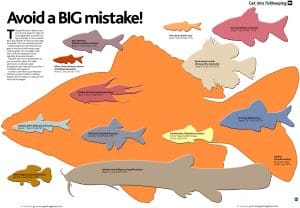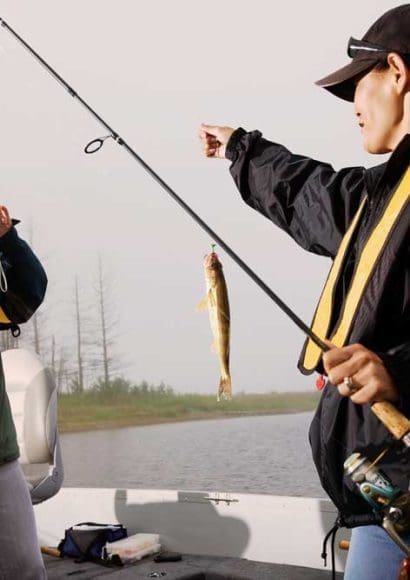
Hello there! Have you ever gone fishing or heard about it? Fishing can be a lot of fun, but did you know that there are rules and laws that everyone needs to follow when they go fishing? These rules are called ‘Fishery Regulations and Laws.’ In this article, we’re going to talk about three important things related to fishing rules: Licenses, Seasons, and Minimum Sizes.
Imagine you’re playing a game, and there are certain rules you need to follow to make the game fair and safe for everyone. Fishing rules are a bit like that. They help protect the fish and the environment so that we can continue to enjoy fishing for a long time.
Contents
Fishing Licenses – The Key to Responsible Fishing🐟
Are you ready to embark on an exciting fishing adventure? Before you cast your line into the water, let’s talk about something very important: Fishing Licenses. These magical permits have a big influence on how we enjoy fishing while helping protect our underwater friends. In this section, we’ll explore everything you need to know about them.
What is a Fishing License and Why Do You Need It?
Think of a fishing license as your golden ticket to the fishing world. It’s a special permission slip from the government that says you can fish legally. But why do you need it? Well, fishing licenses are like overfishing laws that keep too many fish from being caught. They also help fund programs to keep our waters clean and safe for fish to thrive. So, it’s not just a piece of paper; it’s a way to protect our fishy friends!
Types of Fishing Licenses
Just like there are different games to play, there are different types of fishing licenses for different kinds of fishing. For instance, there’s a license for those who love the thrill of sportfishing (catch and release) and another for those who do it for a living, known as commercial fishing. Each type of license lets you do specific things, so it’s essential to choose the right one for your adventure.
Getting Your Fishing License
Getting your fishing license is pretty straightforward, but you need to follow some rules. Usually, you need to be a certain age, often 12 or 16, depending on where you live. You’ll also need to pay a fee, and that money goes toward taking care of the fish and their homes. Some places let you buy your license online or at a local store. It’s important to carry your license with you while fishing because it’s like your fishing ID card.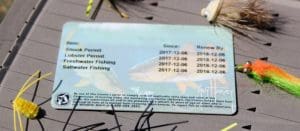
Consequences of Fishing Without a License
Now, let’s talk about the not-so-fun part. If you’re caught fishing without a license, you might get in trouble. You could face fines, lose your fishing gear, or even get banned from fishing in that area for a while. So, it’s super important always to have your fishing license with you when you fish.
Tips for Applying and Renewing Licenses
Here are some handy tips for you:
- Check the fishing rules and regulations in your area to make sure you get the right license.
- Keep your fishing license safe and dry. A plastic bag can help with that!
- If you’re not sure about something, ask an adult or check with your local fish and wildlife agency. They’re there to help.
Fishing Seasons – When, Where, and Why It Matters🐟
Fishing is an awesome outdoor activity, but did you know that there are special times of the year when it’s best to go fishing? These times are called Fishing Seasons, and they’re a big deal in the world of fishing. In this section, we’ll dive deep into what fishing seasons are all about and why they’re so important.
What Are Fishing Seasons and Why Are They Important?
Fishing seasons are like the seasons of the year, but for fishing! They tell us when it’s the right time to catch certain fish without hurting their populations. You see, if we fished all year long, this would drastically affect fishing season. There might not be enough fish left for the future. So, fishing seasons help us keep fishing fun and sustainable.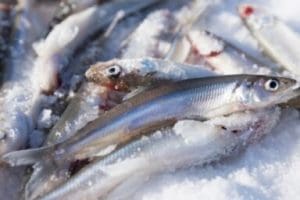
How Fishing Seasons Vary by Location and Species
Just like how the weather can be different in different places, fishing seasons can also vary depending on where you are. It’s because fish like different temperatures and conditions. For example, some fish love the warm summer sun, while others prefer the coolness of spring or fall. Plus, not all fish have the same seasons. Some are ready to be caught in the spring, while others are best caught in the winter.
Examples of Fishing Seasons
Let’s take a peek at some fishing seasons:
- Spring: This is when many fish start getting active after a long, cold winter.
- Summer: Perfect for fishing trips to the lake, especially for bass and trout.
- Fall: A great time for catching salmon as they swim upstream to spawn.
- Winter: Ice fishing season! It’s a bit chilly, but you can catch some tasty fish.
Why We Have Fishing Seasons
Fishing seasons aren’t just to make things complicated. They have important reasons. First, they help protect fish when they’re breeding or growing. It’s like giving them some time off to rest and make more baby fish. Second, they ensure that we don’t take too many fish from the water, which keeps the fish populations healthy.
Consequences of Fishing Out of Season
Now, let’s talk about the not-so-fun part. If you go fishing when it’s not the right season for a particular fish, you could get in trouble with the fishery police! They might give you a fine or take away your fishing gear. So, always check the rules and make sure you’re fishing in the right season.
Minimum Sizes – Why Size Matters in Fishing🐟
When you’re out fishing, did you know that size matters? It’s not just about catching any fish; it’s about catching the right-sized fish. These special rules about fish size are called Minimum Sizes, and they play a big role in keeping fishing fun and sustainable. Let’s dive into the world of fish sizes!
What Are Minimum Sizes and Why Do They Matter?
Imagine you’re playing a game, and there’s a rule that says you can only play if you’re a certain height. Well, fish have something similar, but it’s not about being tall; it’s about being the right size! Minimum sizes are like rules that say fish need to be a certain size before you can catch them. This is super important for the importance of fishing because it helps protect the fish population.
How Minimum Sizes Are Determined for Different Species
Now, you might wonder, “How do they decide what size a fish should be?” It’s a bit like a puzzle. Scientists and fish experts study each type of fish and figure out how big they need to be to have babies and keep the fish population healthy. These rules are usually made by the government, and they follow federal fishing regulations.
Examples of Minimum Sizes for Common Fish
Let’s look at some examples of minimum sizes:
- Trout: In some places, you might need to catch trout that are at least 12 inches long.
- Bass: Bass might need to be around 14 inches before you can keep them.
- Salmon: These fish can vary, but they often need to be pretty big to keep.

Consequences of Catching Fish Below Minimum Size
So, what happens if you catch a fish that’s too small? Well, it’s not a good idea. You might get in trouble with the fishery police, just like when you don’t follow the fishing rules and regulations. They could give you a fine, or worse, it could hurt the fish population because the little fish haven’t had a chance to grow and have babies yet.
Long-Term Benefits of Respecting Minimum Sizes
Now, here’s the cool part. When we follow the rules about minimum sizes, it means more fish have a chance to grow up and have baby fish of their own. This helps keep our waters full of fish for future generations of anglers to enjoy. So, remember, when it comes to fishing, always check the size and make sure your catch is big enough!
Compliance and Sustainability.🐟
Hey there, young anglers! We’ve talked about fishing licenses, seasons, and minimum sizes, but there’s something else that’s super important in the world of fishing. It’s called Compliance and Sustainability. Let’s dive in and explore why it’s crucial to follow the rules when you go fishing.
Why It’s Important to Follow Fishing Rules and Regulations
Think of fishing rules like the rules of a game. They help make sure that everyone plays fairly, and the game stays fun. In this case, the game is fishing, and the rules are there to protect the fish and their homes. When we follow federal fishing regulations and other rules, we help keep our waters full of fish for years to come.
How Regulations Contribute to the Sustainability of Aquatic Ecosystems
Imagine a big jigsaw puzzle. Each piece represents a different part of nature – fish, plants, water, and more. Regulations are like the pieces that fit everything together perfectly. They make sure that we don’t take too many fish from the water, which could upset the balance of the ecosystem. When we follow these rules, it’s like being a superhero for our underwater friends and their homes.
Success Stories in Sustainable Fishing Management
Let’s hear some cool success stories! Around the world, there are places where people and governments have worked together to protect fish and the environment. For example, they might have set up marine reserves where fishing is not allowed, giving fish a safe place to grow and thrive. These success stories show that when we follow the rules, we can make a big difference in the health of our waters.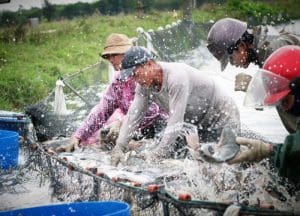
The Angler’s Responsibility in Conservation
As young anglers, we have an important role to play in taking care of our fishing spots. It’s not just the job of the grown-ups or the government. We can:
- Pick up trash and keep our fishing spots clean.
- Release fish gently if they’re too small or out of season.
- Share what we know with others and encourage them to follow the overfishing laws and regulations too.

